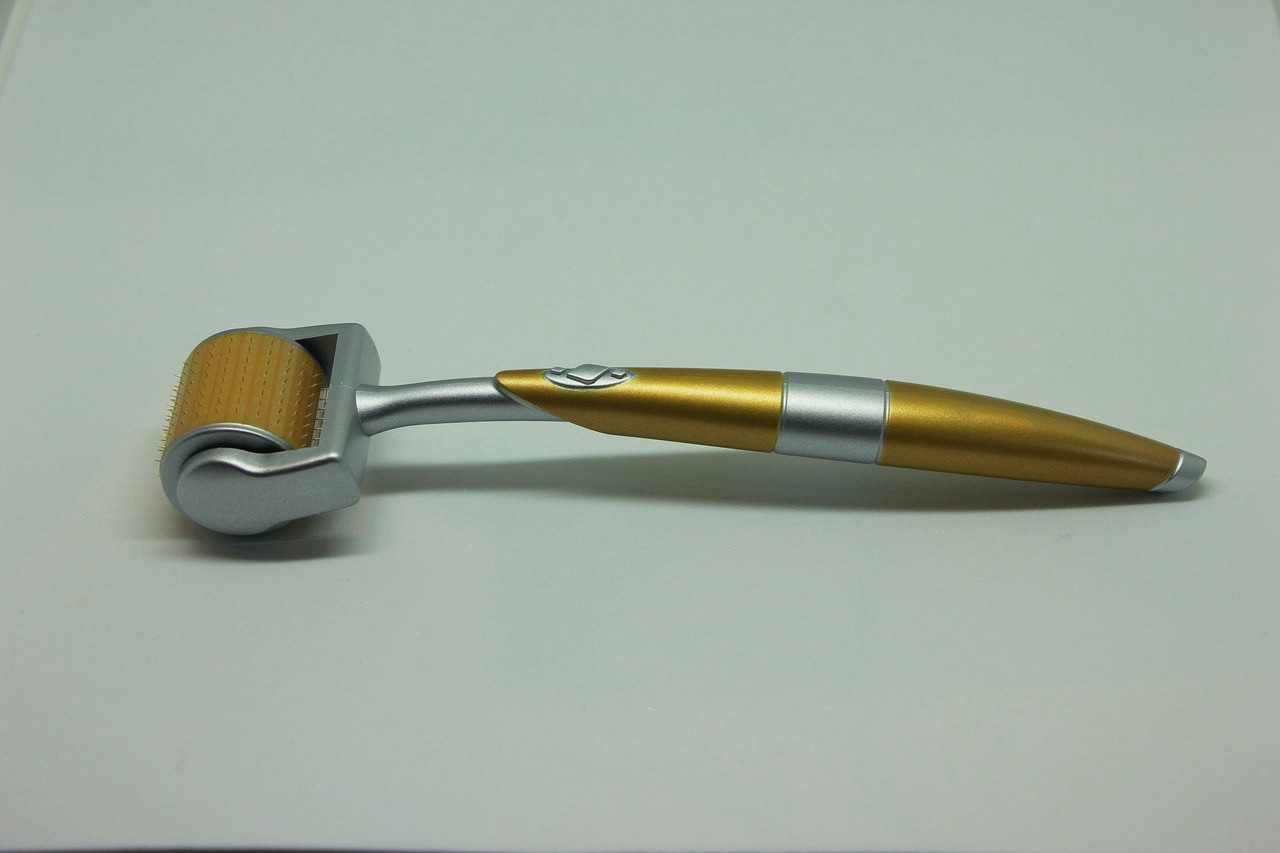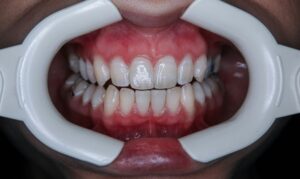Dermarolling, also known as microneedling, has gained significant attention as a non-invasive skincare treatment for improving skin texture, reducing scars, wrinkles, and promoting overall skin rejuvenation. The treatment involves using a small roller covered with fine needles to create tiny punctures, or “micro-injuries,” on the skin’s surface. These micro-injuries trigger the body’s natural healing process, stimulating collagen and elastin production, which are essential proteins for maintaining skin elasticity and firmness.
The question remains: Do dermarollers really help with skin repair? To answer this, it’s important to explore the science behind microneedling, the potential benefits of dermarollers, their effectiveness in addressing skin issues like acne scars, wrinkles, and hyperpigmentation, as well as their limitations and risks.
1. How Dermarollers Work
A dermaroller is a handheld device with a rolling head covered in hundreds of tiny needles. When rolled across the skin, the needles penetrate the outer layer of the skin (the epidermis) and, depending on the needle length, may reach the dermis (the deeper layer of the skin). These tiny punctures create controlled micro-injuries that the body naturally responds to by increasing blood flow and sending healing agents like collagen and elastin to the area.
Collagen is a key protein that provides structural support to the skin, while elastin helps maintain skin’s elasticity. As we age, collagen production naturally declines, leading to wrinkles, sagging, and loss of firmness. Microneedling aims to reverse or slow down these aging processes by promoting collagen production and encouraging skin regeneration.
The Science Behind Dermarolling
The main benefit of dermarolling comes from the concept of collagen induction therapy (CIT). By creating small, controlled injuries, dermarolling stimulates the body to repair itself, which involves the formation of new collagen fibers. This process helps improve the skin’s texture and firmness and can minimize the appearance of scars, fine lines, and other skin imperfections.
Additionally, the micro-injuries caused by dermarollers increase the skin’s absorption capacity, allowing skincare products like serums and moisturizers to penetrate deeper into the skin. This increased absorption can enhance the effectiveness of products designed to repair or hydrate the skin.
2. The Benefits of Dermarolling for Skin Repair
A. Improves Skin Texture and Firmness
One of the most well-documented benefits of dermarolling is its ability to improve overall skin texture and firmness. By boosting collagen production, dermarolling can help reduce the appearance of fine lines, wrinkles, and sagging skin. The increased collagen makes the skin appear plumper, smoother, and more youthful. Studies have shown that regular microneedling treatments can lead to significant improvements in skin tightness and reduce visible signs of aging.
B. Reduces Acne Scars
Dermarolling is often recommended for individuals looking to reduce the appearance of acne scars. Acne scars, particularly those that are pitted or depressed (also known as atrophic scars), can be difficult to treat because they result from damage to the deeper layers of the skin. By encouraging the production of new collagen in the treated area, dermarolling helps fill in these scars, making the skin appear smoother.
A 2009 study published in the Journal of Cutaneous and Aesthetic Surgery found that patients who underwent microneedling treatments experienced a significant reduction in the depth of their acne scars after a series of sessions. This shows that dermarolling can be a valuable tool for people looking to repair scarred skin and restore a more even complexion.
C. Minimizes Hyperpigmentation
Hyperpigmentation occurs when excess melanin, the pigment responsible for skin color, causes dark spots or patches on the skin. Dermarolling can help reduce hyperpigmentation by promoting cell turnover and encouraging the regeneration of new, healthy skin cells. As the skin heals from the micro-injuries, dark spots may fade, leading to a more even skin tone.
D. Improves Absorption of Skincare Products
After using a dermaroller, the microchannels created in the skin allow for better absorption of skincare products. This is particularly beneficial for people who use anti-aging serums, hyaluronic acid, vitamin C, or other active ingredients in their skincare routines. Dermarolling enhances the efficacy of these products by allowing them to penetrate deeper into the skin, where they can provide more noticeable results.
3. How Effective Are Dermarollers for Skin Repair?
The effectiveness of dermarolling for skin repair depends on several factors, including the needle length, frequency of treatment, and specific skin concerns being addressed. While dermarollers can provide impressive results for certain skin issues, they are not a miracle cure for all skin problems, and their effectiveness can vary from person to person.
A. Needle Length Matters
The length of the needles on a dermaroller determines how deep the needles penetrate the skin and, therefore, the type of results you can expect. For example:
- 0.25 mm to 0.5 mm needles are often used for improving product absorption and treating minor surface issues like fine lines and hyperpigmentation.
- 0.5 mm to 1.0 mm needles are more effective for addressing moderate wrinkles, uneven texture, and acne scars.
- 1.5 mm or longer needles are typically reserved for deep scarring, stretch marks, or more severe skin damage, but these should only be used under professional supervision.
At-home dermarollers typically have shorter needles (up to 0.5 mm) and can be effective for maintenance and improving skin texture, while professional treatments with longer needles (up to 2.0 mm) are more effective for more significant skin concerns like deep acne scars or stretch marks.
B. Frequency of Treatment
The results from dermarolling are not instant; it takes time for the skin to produce new collagen and regenerate. For most people, multiple sessions are required to see noticeable improvements in skin texture, scarring, or pigmentation. It’s important to give the skin time to heal between treatments, and overuse can lead to irritation or damage.
For at-home use, dermarolling is generally recommended once every two to four weeks, depending on the needle length and skin sensitivity. Professional microneedling treatments, which penetrate deeper into the skin, are typically performed every four to six weeks.
C. Expected Results and Limitations
While dermarollers can improve skin texture, scars, and pigmentation, they do have limitations. Results may be subtle and take time to become visible. In some cases, individuals with deeper scars or more severe skin conditions may not achieve the same results as those with milder concerns.
It’s also worth noting that dermarolling may not be effective for all types of skin issues. For example, it is unlikely to completely eliminate deep wrinkles, severe skin laxity, or extensive sun damage. For these conditions, more intensive treatments like laser therapy, chemical peels, or injectable fillers may be necessary.
4. Risks and Side Effects of Dermarolling
While dermarolling can offer several benefits for skin repair, it is not without risks, particularly if not done properly. Common risks and side effects include:
- Skin irritation: After a dermarolling session, it’s normal to experience redness, swelling, or irritation, especially if the needles are longer. This typically subsides within a day or two.
- Infection: Since dermarollers create tiny punctures in the skin, there is a risk of infection if the device is not properly sanitized before and after use. It’s essential to clean the dermaroller and your skin before each session.
- Hyperpigmentation: In rare cases, dermarolling can exacerbate hyperpigmentation, especially if performed too aggressively or on skin that is prone to pigment changes.
- Scarring: Improper use of a dermaroller, such as applying too much pressure or using it too frequently, can cause scarring or worsen existing scars.
To minimize risks, it’s crucial to use the dermaroller according to the manufacturer’s guidelines, avoid using it on active acne, open wounds, or irritated skin, and consider seeking professional treatment if you have severe skin issues.
5. Professional Microneedling vs. At-Home Dermarolling
For individuals considering dermarolling, it’s important to understand the difference between at-home dermarollers and professional microneedling treatments. At-home devices are less invasive, typically featuring shorter needles (0.25 mm to 0.5 mm) that do not penetrate as deeply into the skin. These devices can improve product absorption and provide some benefit for mild skin issues, but they may not be as effective for deeper concerns like scars or stretch marks.
Professional microneedling treatments, on the other hand, are performed by dermatologists or licensed estheticians and use longer needles (up to 2.0 mm) to penetrate deeper into the skin. These treatments are more effective for stimulating significant collagen production and addressing more serious skin concerns. Additionally, professional treatments are safer because they are performed under sterile conditions and by trained professionals.
Conclusion: Do Dermarollers Really Help with Skin Repair?
In conclusion, dermarollers can indeed help with skin repair, especially when it comes to improving skin texture, reducing acne scars, minimizing hyperpigmentation, and enhancing the skin’s firmness through collagen stimulation. However, the results can vary depending on the severity of the skin condition, the length of the needles, and the consistency of treatment.
At-home dermarollers can be beneficial for maintaining skin health and improving the absorption of skincare products, but for more significant skin repair—such as treating deep acne scars or addressing severe wrinkles—professional microneedling treatments may be more effective.
While dermarolling can be a valuable tool for skin repair, it is essential to use it properly, follow safety protocols, and be realistic about the results. It’s also important to consult with a dermatologist before starting any new skincare treatment, particularly if you have sensitive skin or existing skin conditions. With the right approach, dermarollers can be a beneficial addition to your skincare routine, offering non-invasive support for smoother, firmer, and more youthful-looking skin.




